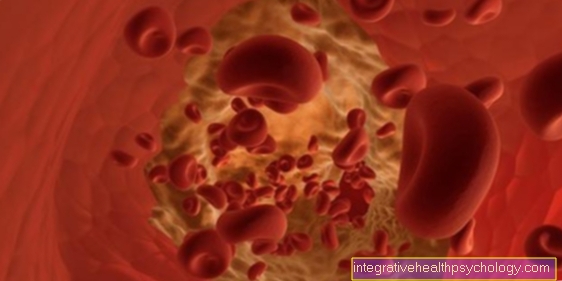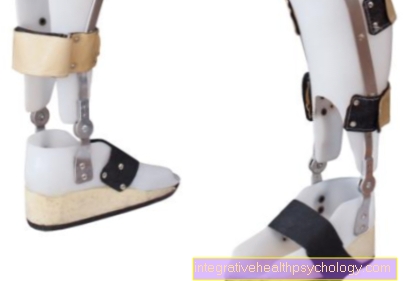hysteria
Synonyms
Hysterical Neurosis Conversion Neurosis, Dissociative Disorder, Histrionic Personality Disorder

definition
Hysteria or dissociative disorder is not a uniform clinical picture, but rather a group of different mental illnesses, which have in common that the connection and cooperation between body and mind are disturbed. So the awareness of one's own identity, be it in the case of a multiple personality or also a depersonalization, can be disturbed.
On the other hand, the boundary between psyche and body can also disappear, so that psychological feelings show up in physical symptoms, even if the person is not aware of the psychological problem.
Concept and history
The concept of hysteria can be traced back to antiquity. There the term was used for all those clinical pictures that are in the area of today psychiatry fall. For those who cannot be explained and described by physical or organic changes.
Nevertheless, the hysteria became a specific organ, namely the uterus, attributed. This makes it clear that mainly "hysterical" women were observed. This was the opinion until the 19th century. The meaning of the term has changed again and again, so that the ancient Greek hysteria is not congruent with the clinical picture discussed here.
Over time, with increasing medical advances, the disease has become more and more narrow. Hysteria was one of the most important topics in psychoanalysis, where it first appeared in empirical clinical studies, especially From Charcot, was researched. There the disease started unsatisfied sexual needs led back. Some treatment practices of the researchers at the time, such as the so-called "ovarian press" are fortunately only bizarre anecdotes these days. Due to the misogynist origin and history, as well as the confusing inconsistent definition of the term, it is now replaced by the above synonyms.
Symptoms
The Symptoms the different forms of hysteria are many. Both the exact appearance and the severity of the symptoms vary greatly from patient to patient. This can be explained by the fact that the Conversion neurosis it is a psychogenic disease, i.e. one that emanates from the psyche. As diverse as the human character are his illnesses.
Some of these sub-forms with typical symptoms of hysteria are shown here. The main symptom of psychological amnesia is memory loss, which can be limited to a specific point in time or a topic, or it can encompass larger areas. At the dissociative stupor A rigid movement is therefore in the foreground.
Both clinical pictures belong to the disorders of movement and sensation. In addition, for example, the memory or the entire personality can be disturbed. The latter shows up as a multiple personality, the existence and definition of which, however, is disputed by experts. Overall, it can be said that the symptoms represent a diversion or an outlet. The patients suppress their emotional crisis and often see it as an unacceptable weakness.
A physical weakness is more socially accepted because it appears inevitable (i.e. tragic) and thus justifies and even demands compassion for the environment. Often attributed hysterical blindness to a not wanting to see certain mental problems. The paralysis just mentioned would therefore be a powerlessness in the face of seemingly unsolvable tasks that the person concerned does not always have to be aware of.
Diagnosis and differential diagnosis

What the patients with hysteria have in common is that they regard changes in body functions as the basis of their suffering. This does not always make it easy for the doctor to find the real cause. But there are a few options here. So those perceived as deaf by patients are correct Skin areas usually does not coincide with the actual supply areas of the nerves.
Nevertheless, it is important to take the patient seriously and to rule out possible dangerous physical illnesses through examination and possibly also through imaging. In older patients in particular, it can also happen that, although one of the examinations carried out is positive for a physical illness, this certainly cannot explain the extent of the symptoms presented by the patient. There are also a few Differential Diagnoses of Hysteriathat must be observed.
Psychosomatic illnesses first show similar symptoms and disease development. Nevertheless, they are clearly different from conversion disorders, as these are associated with actually tangible changes in the body that are absent in the case of the latter. Also one somatoform (not due to organic disease) Pain disorder or one hypochondriac disorder must be considered. The above-mentioned depersonalization can also be seen as a symptom in other psychiatric illnesses, such as depression and schizophrenia occur. However, these disorders also occur together with other mental illnesses.

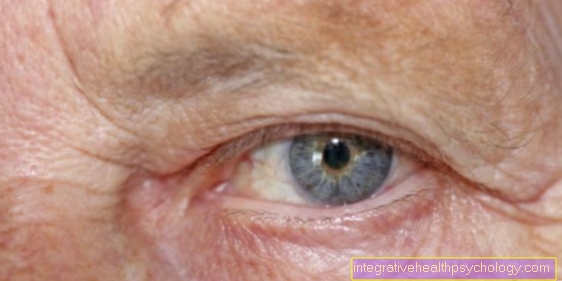





.jpg)








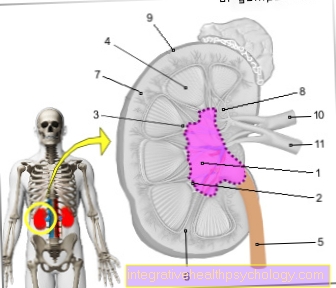
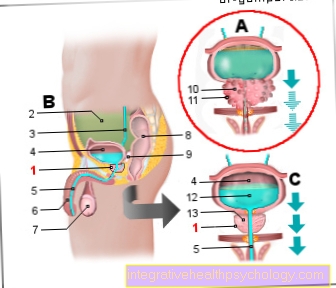



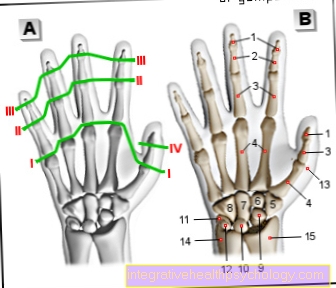
-und-lincosamine.jpg)
